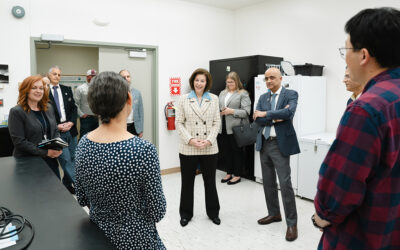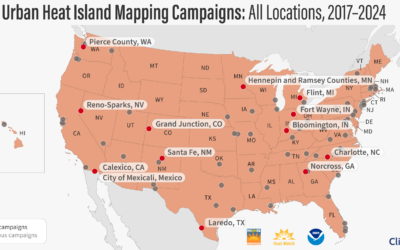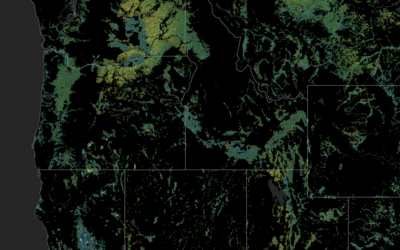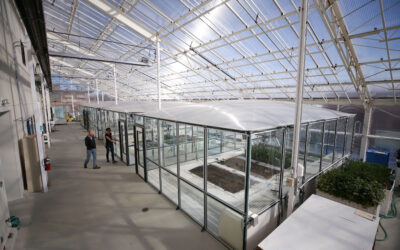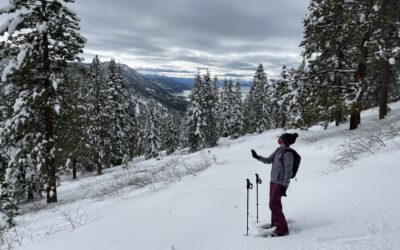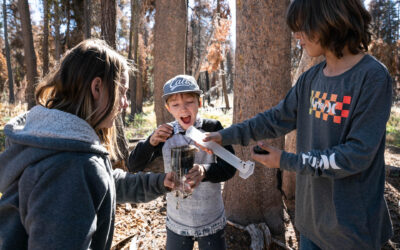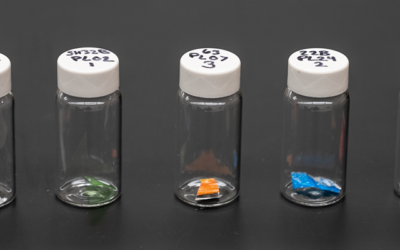U.S. Senator Catherine Cortez Masto visited DRI for a tour of their upgraded facilities to highlight over $9.2 million in investments she secured through recently passed bipartisan legislation to support DRI’s critical research projects that are helping grow Nevada’s clean energy economy, protect the environment, and preparing students for careers in STEM fields.
Reno/Sparks selected to be part of Urban Heat Mapping Campaign
Several municipal, county, and Tribal governments and community groups based in the Reno-Sparks area are teaming up to map the hottest parts of Reno, Sparks, and adjacent portions of Washoe County.
A New, Rigorous Assessment of OpenET Accuracy for Supporting Satellite-Based Water Management
A new study offers a comprehensive multi-model, large-scale accuracy assessment of an operational satellite-based data system to compute evapotranspiration. The researchers found that OpenET data has high accuracy for assessing evapotranspiration in agricultural settings, particularly for annual crops like wheat, corn, soy, and rice.
DRI-Developed Company TuBiomics Named A Top Ten Agri-Biotech Solutions Company of 2023
With support from the Nevada Governor’s Office of Economic Development, TuBiomics has emerged as a leader in developing plant and soil health products using sustainable, natural, chemistry-based solutions.
Community Scientists Needed: Help Improve Winter Weather Predictions
Community members across Utah, the Great Basin, and around Lake Erie and Lake Ontario are invited to join people across the country in contributing winter weather observations. The data is collected by scientists for a NASA-funded project that seeks to improve the accuracy of winter weather predictions.
DRI Scientists Launch Nevada Orchid Project
DRI scientists are starting the first ever effort dedicated to studying and conserving Nevada’s orchids. Many people know orchids as flashy, delicate flowers raised in lush greenhouses, but orchids also thrive in the sparse wetlands sprinkled around Nevada’s arid landscape. In fact, lovers of the state’s orchids like to tout one impressive statistic: Nevada has no less than 14 species of native orchids, in contrast with Hawaii’s mere three.
Meet Ariel Choinard, Project Coordinator for CNAP & Southern Nevada Heat Resiliency Lab
Ariel Choinard, M.A., started at DRI in February 2023 as the project coordinator for the California-Nevada Adaptation Program (CNAP) and the new Southern Nevada Heat Resiliency Lab. She is working with Tamara Wall, Ph.D., to build connections between scientists, community members, and community organizations to co-produce solutions, adaptations, and resilience to climate hazards.
DRI Accepting Applications for New STEM Education Internship Program
DRI is accepting applications for the new STEM Educator Partnership fall internship that will take place from September to December 2023. This paid opportunity is available to current education and science majors at UNR and UNLV, as well as Nevada K-5 educators.
Meet Microplastics Research Students Angelique DePauw and Olivia Hines
Angelique DePauw and Olivia Hines are undergraduate student researchers in the Microplastics and Environmental Chemistry Lab. Together, they are conducting an experiment comparing the decomposition rates of plastic and plastic-alternative straws.
Meet Sayantan (Monty) Majumdar, Ph.D.
Sayantan Majumdar, Ph.D., joined DRI in June 2023 as an assistant research professor of hydrologic sciences and remote sensing. Majumdar, who also goes by the name “Monty,” also specializes in machine learning, geospatial data science, and scientific software development.
